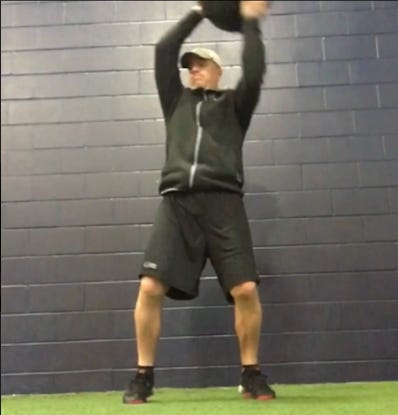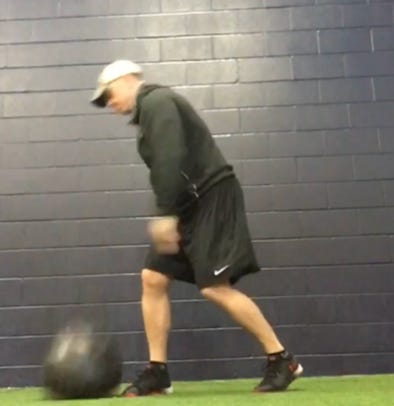The Physical Movement, Lifestyle: 9 Secrets To Being Fit Over 50!
Being fit over 50 requires a different mindset and strategy
Being fit over 50 requires a different mindset and strategy
Let’s get this straight: Our lives have never been busier, yet we have never moved less. Time for a change in approach to keeping our physical independence.
Just turned 55, and my goals are simple. Do the activities I love, that keep my mood and mental well being good, and have energy to spend time with family, throw some batting practice to my kid or have a catch.
These are not the same goals as those our age of previous generations. Being 55 today, has different expectations and implications than our parents and grandparents at that age.

I play hockey a couple of times per week. I cycle in the summer. Hike, and try to do something daily to stay strong and conditioning levels high.
My day job takes me all over the world. Lots of travel at different times of the year. Being a baseball dad adds more travel, all over North America for long car rides in the past few years.
I am happy to say (knock on wood), that I am still able to keep up on the ice. My strength seems to be improving, and I move well enough to do the things I want without compromise.
So what are the secrets?
When I look back at the last number of years and patterns developed, I have narrowed them to 9.
Make your body a priority like an athlete does.
Athletes prepare their bodies in the off-season for their competitions. They invest money in coaching and care. They invest time to work on mobility, balance, agility, coordination, strength, power. They watch what they eat. They are driven to be at their best. The focus on making sure they can exceed the demands of their sport. In most competitive elite sports, this has become a year round endeavor, a lifestyle.

Make movement a priority and do something daily : regardless of where you are!
2. Do something daily. Something. Could be 5–15 minutes or harder a few times per week. A hard day’s warm-up may be the next day’s micro workout. Mobility and balance work happen every day no matter where I am. Harder days include this as part of warm-up.
3. Train for tomorrow. Working out hard is ok, but not much more than 2–3 times per week. Your body needs a little more time to recover when over 50. A recovery workout can be your best friend. Having a little in the gas tank for tomorrow is a good goal today! Most of the fitness routines you will read about talk mostly of pushing to the max. Careful here. Pushing to the max has repercussions for us older bodies!
4. Don’t shy away from recovery day. This is where some of my best cardio workouts come in. A good walk, or stair climb, a cycle are great for the body and clear the mind. Also, foam rollers, and massage balls, and massage guns are my constant companion on the road, in the car and at home.
5. Lots of water, veggies, proteins and go easy on the booze & sugar. Nothing revolutionary here. Simple, not easy.
6. Sleep! Professor Vicki Culpin, in her book “business of sleep”, takes aim at “an age of foolishness” in which large numbers of people seem unaware of what Culpin describes as the “serious cognitive and health consequences of insufficient or poor quality sleep”. It’s a thing. So different than the mantra of a few years ago around not needing much sleep to function well.
7. Add resistance to your movement. Adding resistance to your routine is a big thing. Not so much a secret though. So much research on benefits of getting stronger. With mobility ensuring you move well, adding resistance will increase metabolism, add some lean tissue and burn some fat.
8. Build intervals into your workouts. At least 2 times per week. Low or no impact works best for us old folks. This is where skating, cycling and swimming come in. Personally, I don’t run. Too hard on my body. I need that body to move tomorrow!. The most I will do is stair climbing or hiking. Either at the gym on a machine, or in a hotel up the stairs and down or a trail. Everything from 30 second work 90 seconds rest, to 3–4 minutes work and 3–4 minutes off. I vary it. But every week, do at least 2 interval sessions.
One of the top researchers around interval training is right here in Canada, at McMaster University in Dr Martin Gibala. One of Dr. Gibala’s landmark studies compared the following: 1) 20 minutes of high intensity interval training consisting of a 30 second sprint followed by a four-minute rest, with 2) 90 to 120 minutes in the target heart rate zone.
The results were amazing. Subjects got the same improvement in oxygen utilization from both programs. What is more amazing is that the 20- minute program only requires about two minutes and 30 seconds of actual work performed.



Power: the ability to move quickly leave us super fast as we age unless we work on it!
9. Train for power. Power (Force x velocity) declines unless we train for it. Move something quickly. Your body (small hops or jumps), a med ball, kettlebell, a weight stack with cable, a resistance band, something. The benefits of moving something quickly and safely keep the fast twitch fibers going, increase metabolism and overall bulletproof your body. In fact, if you read up on falls in later life, it has to do with not being able to react fast more than losing balance.
10. Bonus secret: use the professionals to help out. Naturopath. Osteopath. Chiropractor. Physiotherapist. Movement coach. There is lots of information out there, keep it simple by cutting through the clutter. These experts can help!
To summarize:
Treat life like an athletic event. Prepare, participate, recover.
Do something daily
Eat right.
Train for tomorrow.
Get your sleep.
Get some coaching.
When it comes to doing something daily, I work in some recovery days, some mobility daily, balance work, train for power, add some weight and get my intervals in!
All the while I have learned to listen to my body and back off when sore and sleep when tired.
There you have it.
9 secrets to being fit over 50. Some might not be secret!
This article was originally published at www.athleticover40.com



